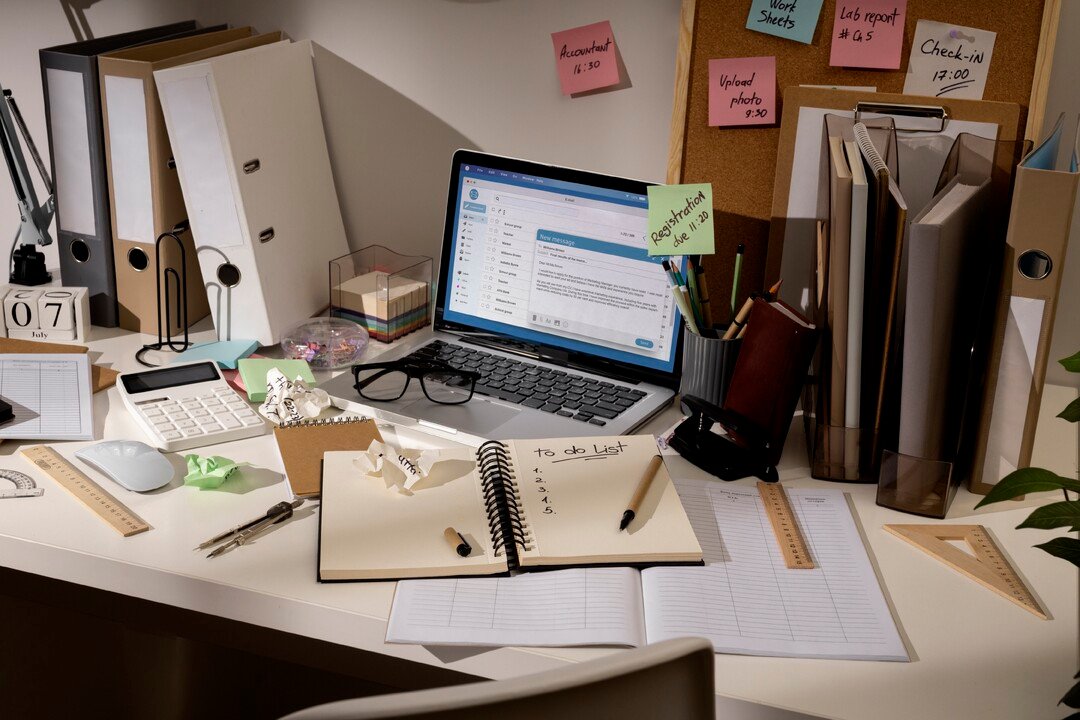Productivity isn’t just about doing more — it’s about doing what matters in a way that feels sustainable. Many people chase hacks and shortcuts, but true productivity comes from forming strong habits that support long-term success. In this article, you’ll learn powerful, practical habits that can help you become more productive without burning out.
Start Your Day with Intention
Instead of jumping into emails or social media, take 5 to 10 minutes each morning to clarify your intentions. This small act creates mental clarity and helps you take control of your day.
Some ideas to try:
- Write down your top three priorities for the day.
- Reflect on a motivational quote or affirmation.
- Visualize yourself completing tasks with ease.
Plan the Night Before
Productive people don’t start their days guessing what to do. Spend a few minutes each evening organizing your next day. Lay out your clothes, prep meals, and make a to-do list. This lowers morning stress and gives you a running start.
Bonus tip: Use a physical planner or digital task manager like Notion, Todoist, or Google Keep.
Use Time Blocks
Time blocking means dedicating specific chunks of your day to certain tasks. This method helps minimize distractions and multitasking.
Here’s how to do it:
- Break your day into blocks: email, deep work, meetings, breaks.
- Assign tasks to each block.
- Stick to your schedule as much as possible.
This habit can skyrocket your focus and make your workload feel more manageable.
Focus on One Task at a Time
Multitasking may seem efficient, but it actually decreases productivity and increases errors. Instead, use techniques like:
- Pomodoro Technique: 25 minutes of work, 5-minute break.
- Single-tasking sprints: 90-minute periods focused on one high-value task.
When your attention is undivided, your work quality and speed improve.
Take Meaningful Breaks
Working non-stop may feel productive, but it leads to burnout. Productive people know that rest is part of the process. Short breaks every 60 to 90 minutes help restore energy and mental clarity.
Try:
- Taking a 5-minute walk.
- Doing light stretching.
- Drinking a glass of water away from your screen.
Declutter Your Work Environment
Cluttered spaces can overwhelm your brain and kill your focus. Make it a habit to keep your workspace clean and minimal.
What to remove:
- Unnecessary papers and sticky notes.
- Distracting gadgets or notifications.
- Visual noise (too many tabs or open programs).
A tidy environment equals a focused mind.
Limit Digital Distractions
Phones, notifications, and social media can sabotage even your best intentions. Set digital boundaries:
- Turn off non-essential notifications.
- Use “Focus Mode” on your phone or computer.
- Schedule time to check messages instead of reacting instantly.
The fewer distractions, the more productive you’ll be.
Prioritize High-Impact Tasks
Not all tasks are created equal. Use the 80/20 rule: 80% of your results come from 20% of your efforts. Identify which tasks drive the most value and do those first.
Ask yourself:
- What task would make the biggest difference if done today?
- What can I delegate or postpone?
Focusing on what matters most leads to faster progress.
Reflect and Adjust Weekly
Every week, take 15–30 minutes to review what worked, what didn’t, and how you can improve. This helps you stay on track and make meaningful adjustments.
Questions to guide your review:
- What were my biggest wins this week?
- What distracted me?
- What should I do differently next week?
Reflection transforms habits into systems that evolve with you.
Build Consistency, Not Perfection
The goal isn’t to be perfect every day — it’s to be consistent over time. Even small actions done regularly compound into massive results. If you miss a day or fall behind, just reset and continue.
Consistency beats motivation every time.
Final Thoughts: Productivity Is a Lifestyle, Not a Trend
Becoming more productive isn’t about adding pressure or squeezing more into your day. It’s about aligning your time with your values, forming habits that energize you, and creating a flow that works for your life.
Start small. Choose one habit from this list and commit to practicing it for the next seven days. Watch how even the smallest change can lead to lasting transformation.









